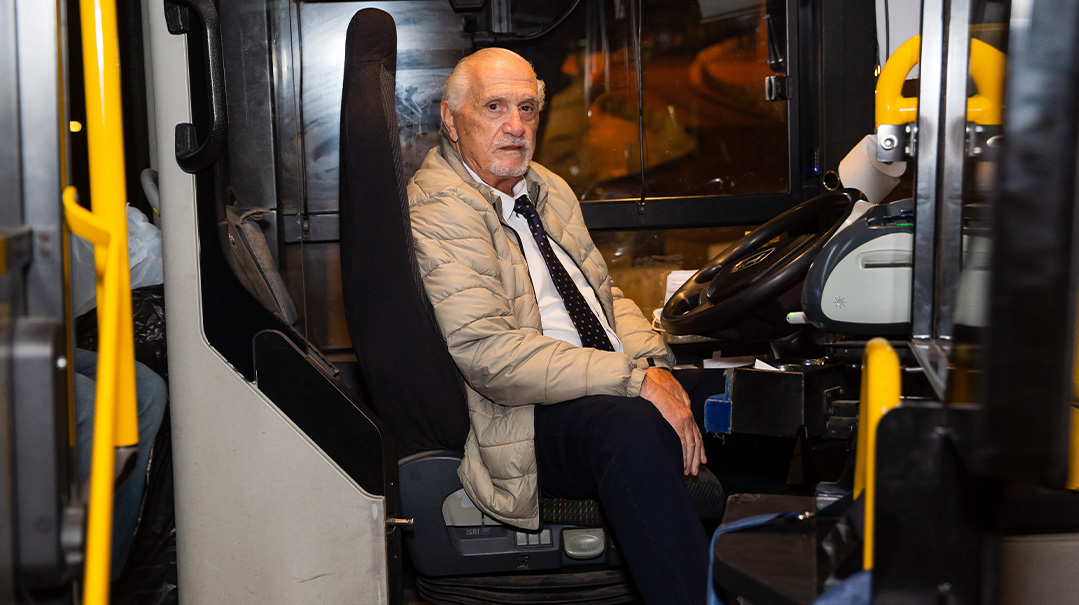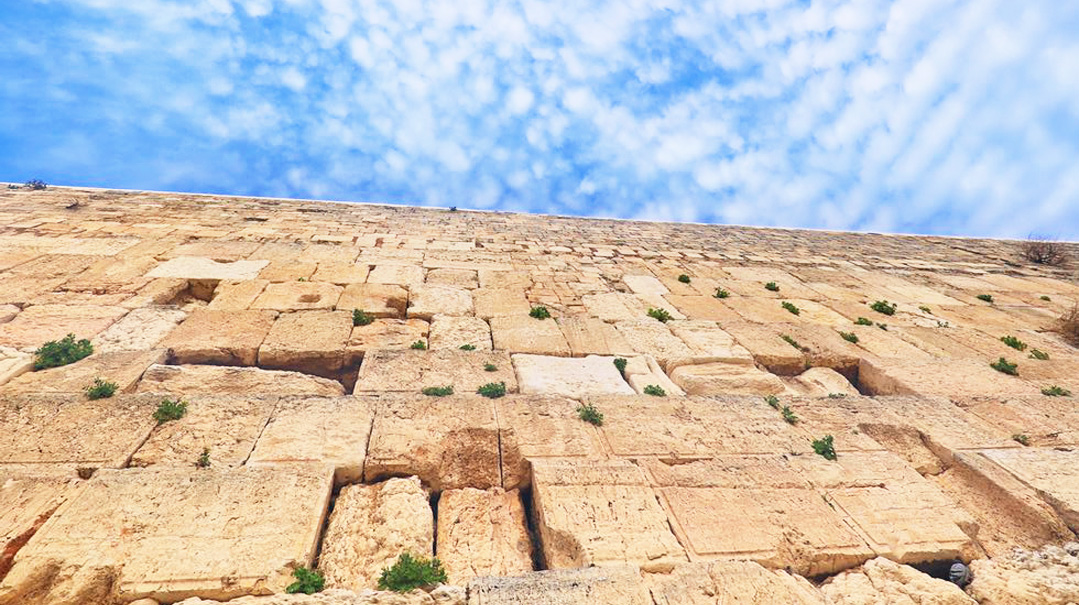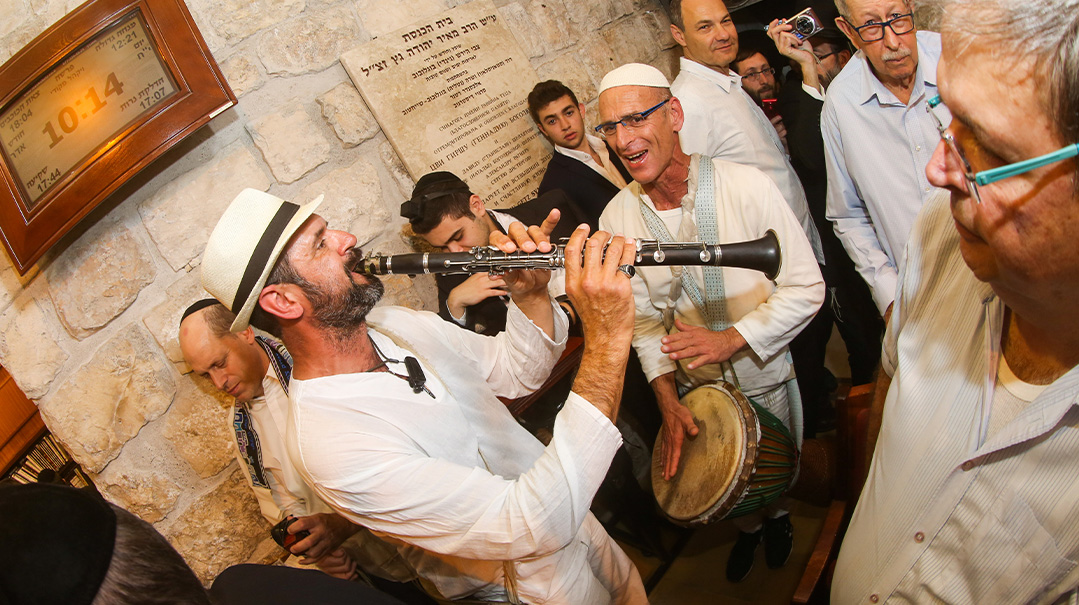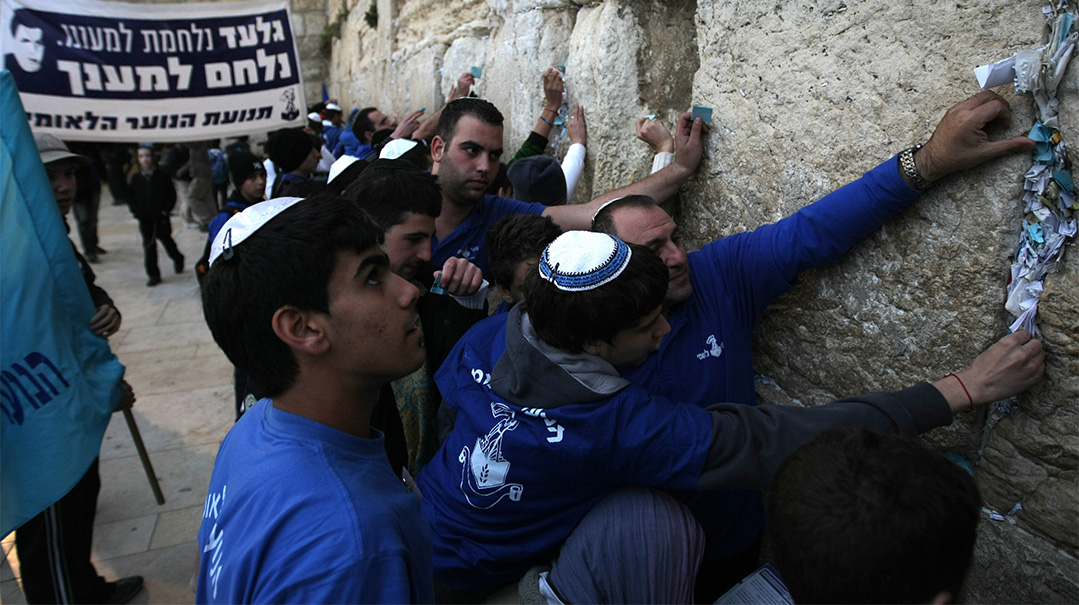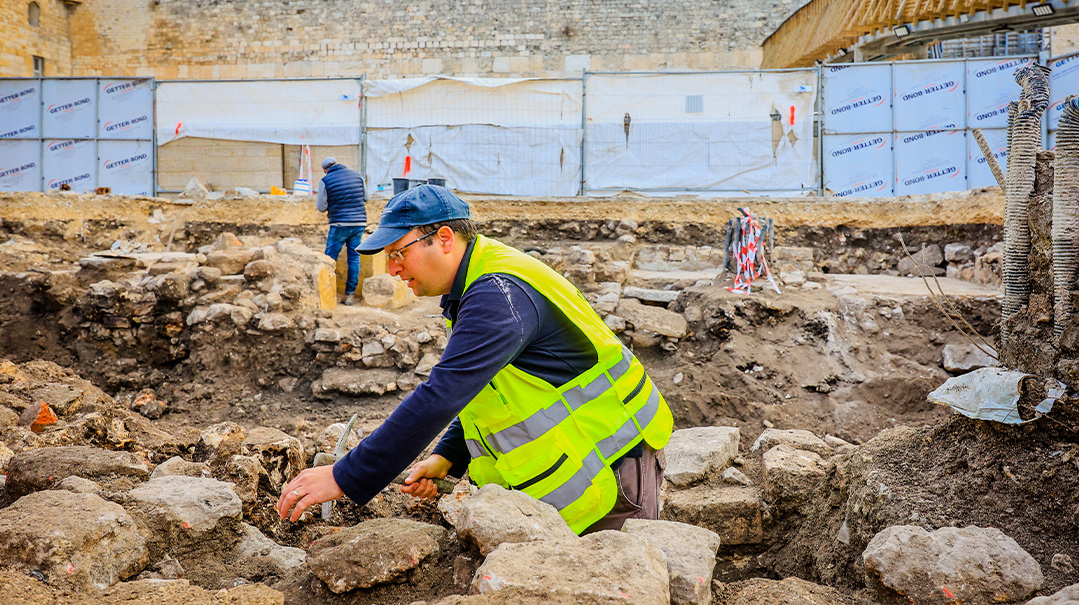Roar of Redemption

“Tzur Yisrael…” the voice continues, emitting almost-visible sound waves. “Kumah!” is uttered in something like a roar

White doves circle overhead, the interlocking mountain spurs beyond Silwan grow more clearly defined, and the sky turns a pale blue. Sunrise is about to wash over the Kosel.
The ethereal visuals are accompanied by a distinct soundtrack. As vasikin approaches, the subdued hum of the numerous minyanim around the plaza becomes more audible.
How these disparate gatherings will converge at one point is anyone’s guess.
At 30 seconds to H hour, the answer becomes clear.
“Tehi-lo-o-o-ois!” a Yerushalmi-accented voice of stentorian, bullhorn power rings out over the plaza, enunciating each word at length. It’s coming from Rav Druk’s minyan, a Kosel institution since 1967, famous both for its speed and the maggid shiur who bequeathed its name.
“Tzur Yisrael…” the voice continues, emitting almost-visible sound waves. “Kumah!” is uttered in something like a roar.
With one final throaty flourish for “go’al Yisrael,” the Kosel plaza falls silent, and Yossi Weinberg has completed his work.
Ever since my wife’s grandfather, Mr. David Rothschild of Zurich, introduced me to “his” minyan — the one he’s called home on every visit for half-a-century — blond-bearded, glinting-eyed Yossi Weinberg has loomed large as the unofficial chazzan of the Kosel.
Like many things about this holy place, no one can remember when or how his daily ritual began.
But for Yossi, it’s one part of a bigger story that stretches back 43 years, bound up with a vanished generation of hard-working Yerushalmis whose reverence for the Kosel was the focal point of their lives.
“This isn’t any old minyan, but one whose origins were in Zichron Moshe, long before the Six Day War,” explains Yossi. “Rav Yeshaya Sheinberger gave a famous shiur beginning at 4 a.m. to a group of balabatim from the area. It was a who’s who of Geula. Nachman Yaroslavski had a big lumber store in Beis Yisrael, Lorberbaum sold chicken, Dovid Gerlitz owned the bakery chain.”
The devotees shared two things in common: They were men of the world who knew a good business deal and men of Yerushalayim who missed the Kosel they’d grown up with.
So, when the Old City returned to Jewish hands in 1967, they all followed their maggid shiur to the Kosel.
For the old-timers, recalls Yossi, it was like living to see the Beis Hamikdash built again.
When Rav Sheinberger, who was a brother-in-law of legendary Neturei Karta founder Rav Amram Blau, passed away in 1979, his shoes proved difficult to fill.
“We went through a few maggidei shiur, who didn’t have Rav Sheinberger’s combination of charisma and learning,” says Weinberg, whose grandfather was a member of the original group.
“Then, we found Rav Mordechai Druk. He was able to draw all these working men in, to give over the sweetness of Gemara so that they’d come out early in the morning.”
The shiur found a mentor, but Yossi Weinberg found a father figure. “Everything I know, every vort, is from him.”
At some stage, Rav Druk suggested an innovation. “These were all men who employed many people and needed to be at their businesses early to oversee things, so they davened at alos. Rav Druk told them that after such incredible learning, only davening vasikin was appropriate. So, they agreed to change, with one condition: that the minyan be fast.”
Twelve years ago, Yossi lost that paternal influence when Rav Druk was niftar. But in a minyan now composing the grandsons of the founders, it was only natural that his son Rav Yisrael Meir Druk — a chavrusa of Rav Chaim Kanievsky and brilliant maggid shiur in his own right — should take up the mantel.
That’s why when I slip into the shiur on another predawn morning like thousands that have gone before it, Yossi Weinberg is there.
Captivated by the shiur, he’ll soon don tefillin for the express trip to his starring role.
“Kumah!” he’ll boom out his roar of redemption.
The plaza will sink into reverential tefillah, as sunrise once again washes over the golden stones.
(Originally featured in Mishpacha, Issue 907)
Oops! We could not locate your form.

